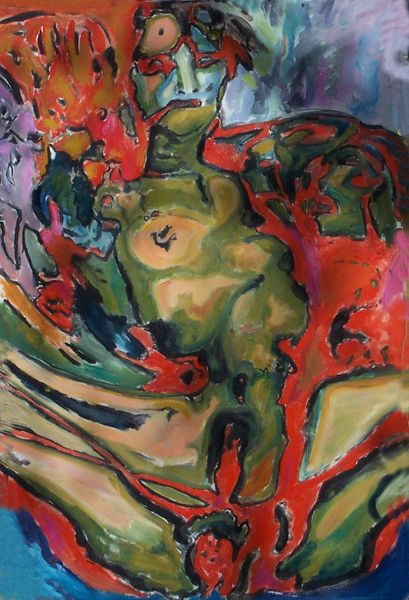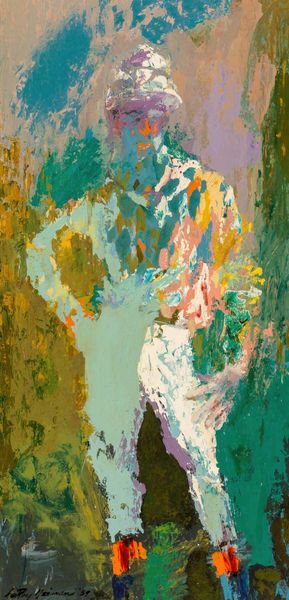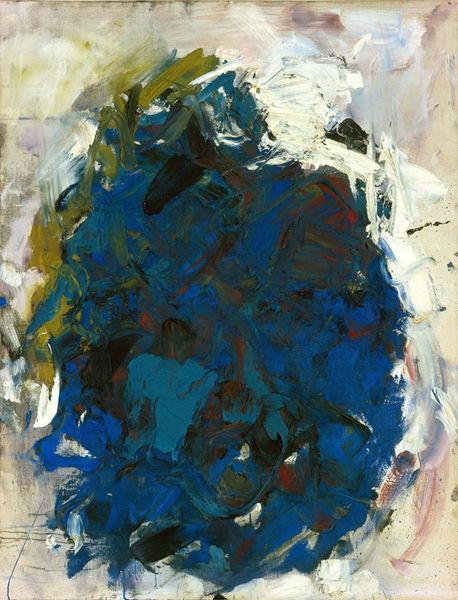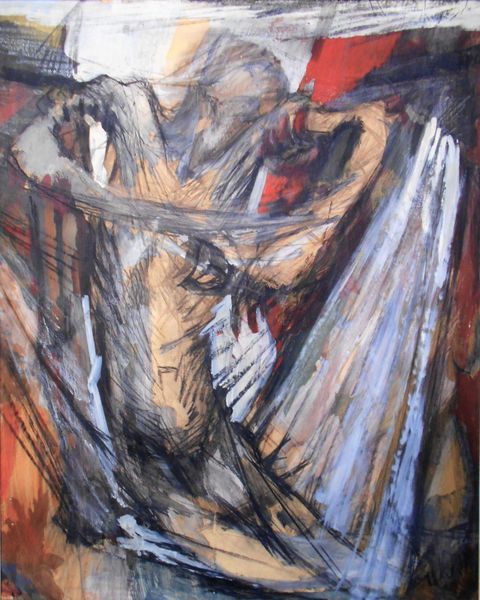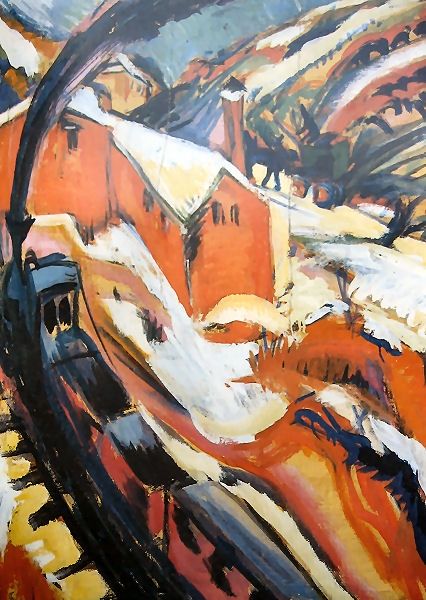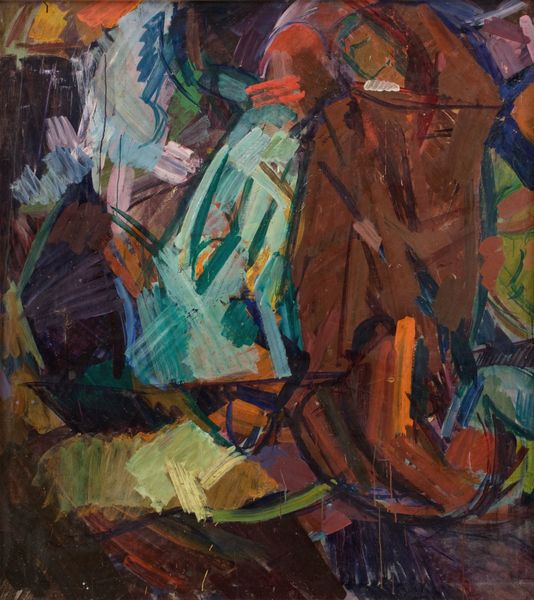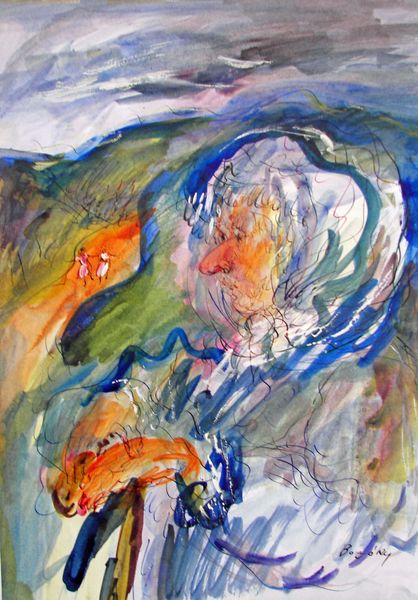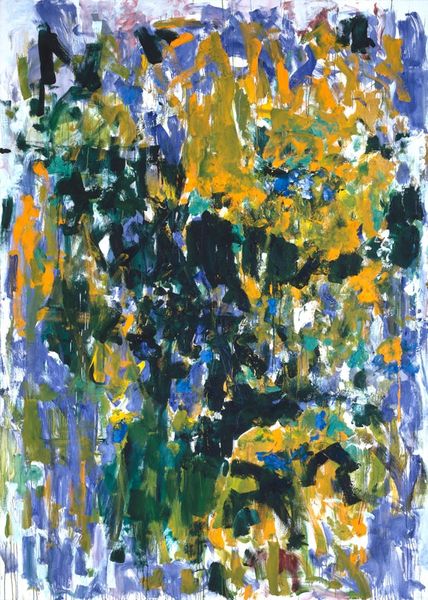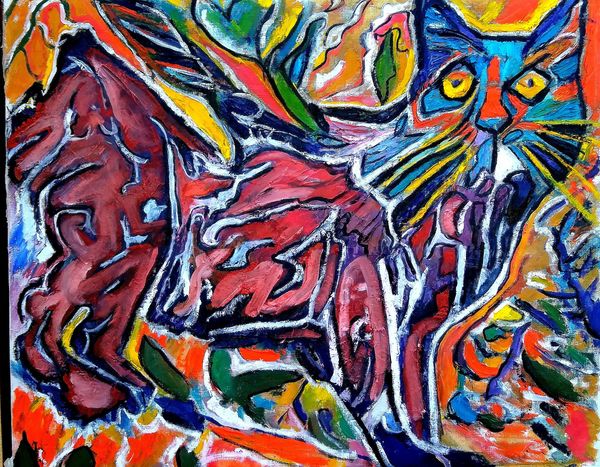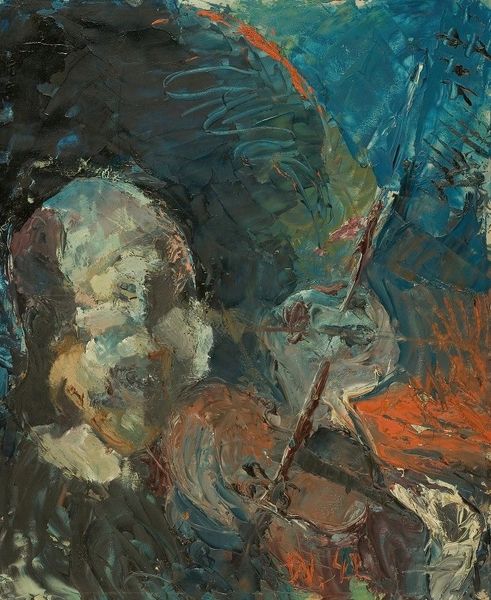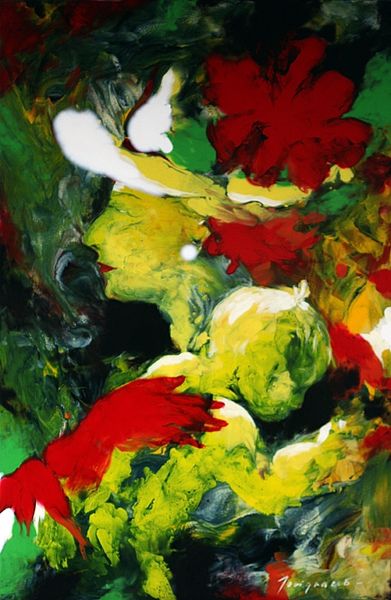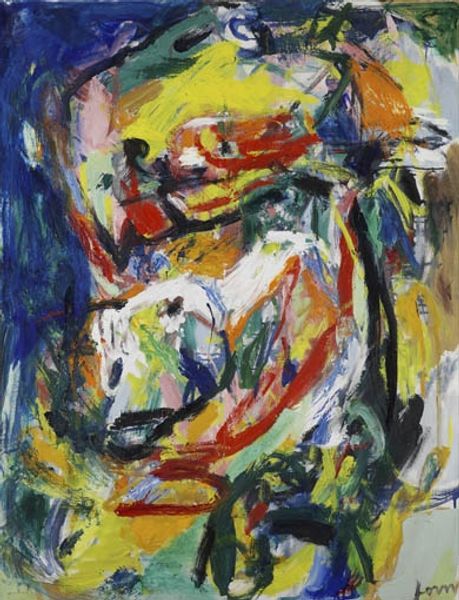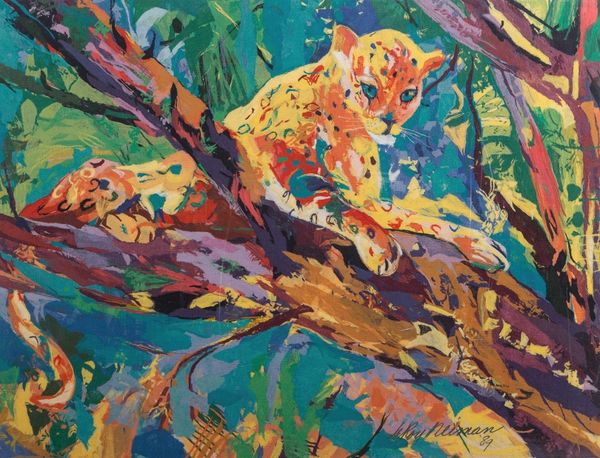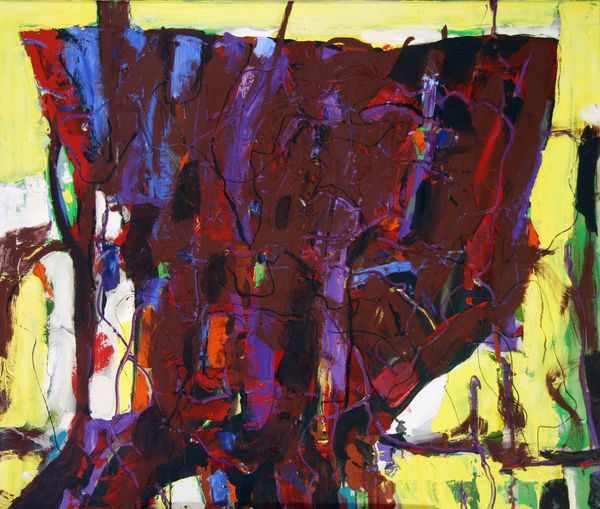
Copyright: Hale Woodruff,Fair Use
Editor: Hale Woodruff's "Return of Europa," from 1958, strikes me as a particularly energetic piece. The swirling brushstrokes of oil paint create a sense of dynamic movement. The palette is dominated by yellows, greens and browns and has a mysterious tension. What do you see in this painting? Curator: Indeed. Consider how Woodruff titles the work “Return of Europa,” subtly invoking the mythological Europa, a Phoenician princess abducted by Zeus in the form of a bull. Yet, this painting presents us with no easily discernible bull or maiden. Rather, the symbolic weight shifts. Note the yellows bursting from the composition's heart, almost like a sun, but fractured and incomplete. Could this fragmented light represent a shattered, or perhaps transformed, European identity in the postwar era? What remains is cultural memory encoded in vibrant hues. Editor: So you’re saying the abstraction itself becomes a symbol of fragmented identity and history? The lack of clear imagery forces us to confront those concepts directly? Curator: Precisely. The absence becomes a presence. Woodruff uses abstract expressionism to grapple with historical and psychological narratives. Look how the gestural brushstrokes, full of raw emotion, carry their own history, evoking both the artist's hand and a larger cultural memory. Do you see the earthy tones anchored at the bottom? What might they signify? Editor: Perhaps a foundation, or the land itself? Grounding the abstract figures and colors in a tangible reality? I had been mainly attracted to the light tones on top, but focusing on those darker grounding colors changes everything. Curator: Precisely, consider how these colors relate. Now can you trace this ground and that relationship to your previous reaction? Editor: Seeing the work like this has made me realize that art is always shaped by history and mythology. Curator: And in turn, reshapes our understanding of both.
Comments
No comments
Be the first to comment and join the conversation on the ultimate creative platform.
